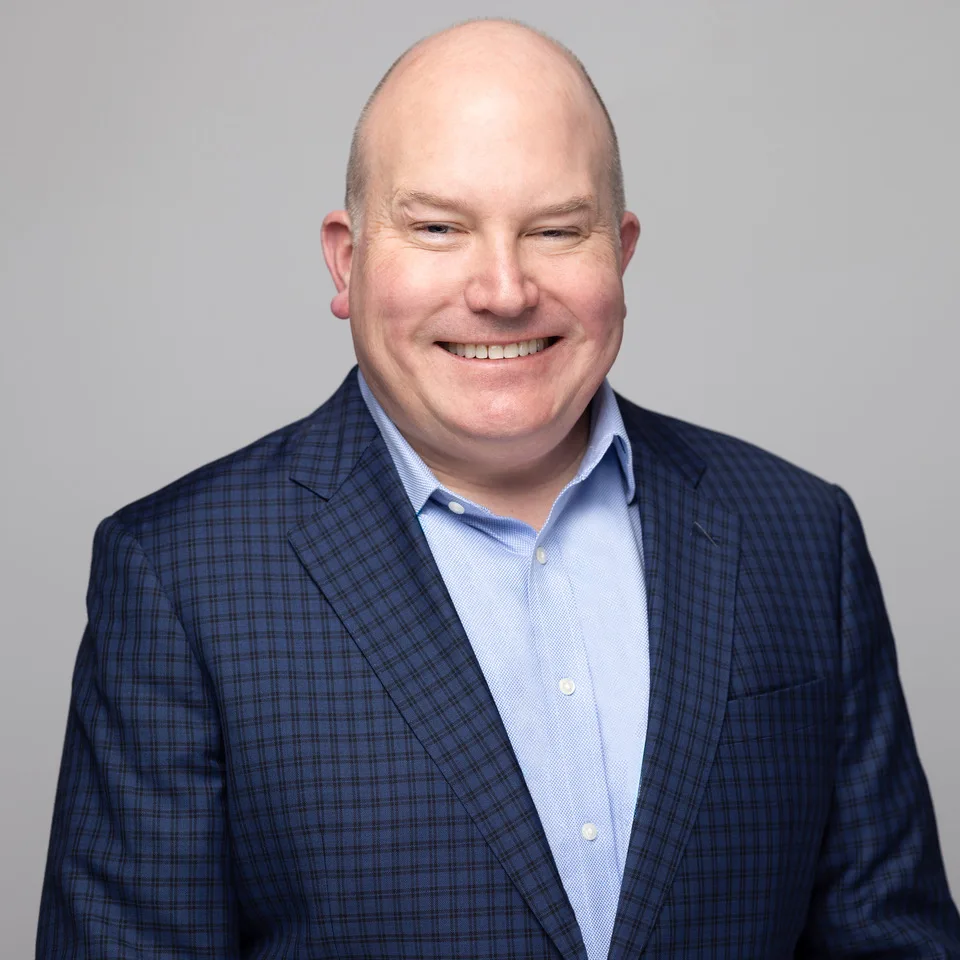Interviewing Dr. Kenneth Richter: Combat Veteran, Psychiatrist, Internationally Recognized Expert

Pyramid Healthcare, Inc. has appointed Kenneth E. Richter, Jr. as its Chief Clinical Officer (CCO) to lead its clinical strategy and vision, advancing its mission to create solutions for individuals, families, and communities that will lead to a healthier quality of life.
In this interview, Dr. Richter shares his experiences as a decorated combat veteran, an international healthcare leader, a board-certified psychiatrist, and a retired Navy Captain. He also discusses the barriers to behavioral healthcare that veterans encounter and potential strategies to help them navigate these challenges to seek life-saving treatment for mental health and substance use disorders.
How did you come to serve in the military?
After being accepted to medical school in 1999, I applied for and was accepted into the Navy’s Health Professions Scholarship Program (HPSP). On the tragic day of September 11, 2001, I was a third-year medical student. I don’t think I fully understood how profoundly that attack would impact the course of my professional life.
In 2003, I graduated from medical school and began my one-year internship at the Naval Medical Center San Diego. After successfully completing the first year of my postgraduate medical education (GME-1) internship, my training was paused—a standard military practice—because of the ongoing wars in Iraq and Afghanistan and the need for medical staffing. I then served as a general medical officer for a Marine infantry battalion.
Between mid-2004 and mid-2006, I served as a general physician for the 1st Battalion, 7th Marines during two Operations Iraqi Freedom. In my first deployment, I was the only physician at a small, company-sized outpost of about 300 to 400 people. Fortunately, during this deployment, I gained a deep understanding of how the military operates at the mission execution level. It was an austere, heavily besieged environment where I faced everything from runny noses to severe battlefield trauma. I had prior experience in emergency rooms, but, in contrast, with battlefield medicine, I often knew the injured service member very well.
Four days before returning home from my first deployment, on February 25, 2005, I was eight feet away from a 120mm mortar that was fired at my position. Fortunately, I was wearing all my protective gear, which made me luckier than many Marines and Sailors I cared for. However, I did suffer a blown left tympanic membrane, was knocked out, and broke my nose. Later, I would joke that my most significant achievement was successfully reassuring my wife when I returned to nearly the same area eight months later that the threat had lessened.
Tell us about your Purple Heart.
I received a Purple Heart and a Combat Action Ribbon, meaning I’ve taken and returned fire in combat and successfully executed my duties in direct combat.
While I appreciate the recognition and the credibility that comes with it, I have mixed feelings about these awards since some of my patients paid the ultimate price for our grateful nation. I realize it’s not entirely my fault—it’s survivor’s guilt—but as a doctor, I tend to shoulder that responsibility.
Walk us through your military career after those deployments.
When I returned to residency, I began specialized training in psychiatry. After finishing all my advanced training, I became the head of the mental health unit at the NATO hospital in Kandahar, Afghanistan. Later, I returned to the U.S., where I managed a busy outpatient clinic and later directed a residential PTSD treatment program on the West Coast. Eventually, I took on another assignment with the Marines, overseeing all embedded mental health efforts on the West Coast. During this time, I also delved into global health diplomacy, making numerous trips to support our Central Asia and African allies. For instance, the Cameroon government was battling global terrorism from Boko Haram. We supported their special forces by providing psychological first-aid capabilities. It was a rewarding experience.
In 2016, I was offered the opportunity to relocate to Washington, D.C., to be the Director of Psychological Health for the Navy. It was an honor to be involved in creative problem-solving at that level. Subsequently, primary care for the Navy was also folded into my portfolio. The Navy utilizes an embedded mental health model, where mental health providers are in the primary care setting for early intervention. Subsequently, I completed a short tour of a leadership role in Walter Reed’s Mental Health Directorate, which has over 400 people and numerous highly regarded training programs. I departed that role early when I was requested by the Assistant Commandant of the Marine Corps to be the head of mental health for that branch, as I had previously done for the Navy. I continued to do some health diplomacy as well.
I was appointed as the Director of Mental Health Policy for my final assignment. I reported to the Assistant Secretary of Defense for Health Affairs. In that role, I managed, optimized, and ensured the quality of care for our nearly 10 million beneficiaries. I also represented the Secretary of Defense on mental health issues to Congress and the White House through the Domestic Policy Council. Interagency collaboration is a process where all federal agencies send their top experts to discuss and determine policies. For instance, the policy regarding post-COVID Buprenorphine prescribing was a topic of debate, and I was honored to be the only prescriber present. It was fulfilling to have my voice heard and to make what felt like a significant impact. That was my capstone assignment in mental health and catalyzed beginning my next professional chapter with Pyramid!
What was your proudest accomplishment in the military?
Even when things were hard, I never shied away from a challenge. For example, when I was injured and had to return to the same place where it happened, it took some willpower, but I remained focused on supporting my team.
Later in my career, my involvement on the national policy stage was also deeply fulfilling, having my perspective affect so many people—hopefully in a positive way!
Why did you decide to become a psychiatrist?
First, people are fascinating. I enjoy getting to know them, meeting them where they are, understanding what would be helpful to them, their willingness to accept treatment, and then tailoring that treatment to meet their specific needs. Additionally, after my deployments, I had enough blood and guts to last a lifetime. I love psychiatry and haven’t looked back once. It’s a great field with a bright future.
As a physician, particularly in psychiatry, I have consistently focused on mental health while still maintaining a perspective on general medicine. My leadership philosophy is that it’s better to be a mile wide and an inch deep, having some knowledge across various areas. This outlook can provide powerful insights when tackling complex challenges.
What led you to your current role at Pyramid?
The culture, the mission, the clinical success, and the people.
Pyramid is a highly welcoming organization, and the role aligns perfectly with my career strategic goals. I know I can make a difference, and I am genuinely happy to be here. I appreciate our many long-time employees and can see why they have stuck around!
Tell us about your work with veterans’ mental health.
In addition to focusing on the active duty population, I’ve advocated for veteran causes for many years. While in San Diego, I advised the board of Veterans Village of San Diego, which does excellent work for veterans by providing sober living arrangements and recovery support.
Later, in Northern California, my then commander, General Nicholson, the head of the 1st Marine Division, requested my help with the Wine Country Marines philanthropy organization, which focuses on the veteran population. I had the chance to fly up to northern California several times to speak on their behalf and take part in some of their job fairs.
Toward the end of my career at the Office of the Secretary of Defense, I had the opportunity to collaborate with the Department of Veteran’s Affairs. Recently, I co-authored an article in the Annals of Internal Medicine detailing the year-long collaborative process to develop the 2024 VA/DoD Clinical Practice Guidelines for managing a suicidal patient. This article was published this month!
More widely, I’m focused on the collaborative effort we undertook with the VA, which aims to foster expectations for recovery. For veterans to make significant progress, they must genuinely believe it is possible. Most veterans with chronic PTSD can see substantial improvement with the proper treatment, but a complex set of factors suggests otherwise.
What are some of the most pressing issues veterans face today?
The rigors of military service, deployment, and combat experiences uniquely challenge veterans. People who haven’t experienced it don’t understand.
Other significant challenges include systemic barriers to care and issues specific to the military, such as military sexual trauma. Veterans experience a high prevalence of PTSD, depression, and anxiety. The rates of PTSD range from 14% to 16% among veterans of Iraq and Afghanistan, often occurring alongside a dual diagnosis of substance use where individuals sometimes self-medicate to cope. Another contributing factor is co-occurring traumatic brain injury (TBI). Among the most concerning issues is the heightened risk of suicide. This is why I was pleased to participate in our latest analysis of all the treatments and best practices for caring for patients experiencing suicidal ideation. I believe strongly that suicide is a complex issue requiring a comprehensive, collaborative, multidisciplinary response across all sectors of society.
We must continue to overcome some barriers to care, such as long wait times to be seen and care deserts, with innovations such as telehealth. In addition to rural care deserts, which most people know, there are also urban and suburban care deserts. For example, in a significant metropolitan area like Washington, D.C., 80% of private practice psychiatrists don’t accept insurance at all, which, even in a high population density, makes accessing care even more difficult for veterans.
The transition to civilian life presents another unique challenge for veterans. As a doctor, it’s probably easier, but I’ve been experiencing that a little bit myself.
Which barriers prevent veterans from seeking behavioral healthcare?
We often hear about the stigma surrounding mental health and substance use. We are making sizable progress in this area, partly due to changing cultural attitudes. For younger individuals in Generation Z, it’s becoming less stigmatizing to talk about needing help. However, in specific military communities, like aviation, there have long been concerns about career repercussions and the potential impact on security clearance. I always felt it was important to address those concerns by saying that if you don’t get better, you won’t be able to perform your job effectively, which will lead to career consequences.
Access to care, especially the long wait times, continues to be a persistent issue. Twenty percent of veterans report waiting over six months for an appointment. This reflects my personal experience; I retired on October 1, and the soonest appointment I could get was in March. That’s a long time to wait when a veteran is dealing with serious issues and underscores the need for more aggressive use of the VA Clinical Care Network.
In addition, many veterans live in underserved rural areas, where accessing care can be a logistical or geographical challenge if they are far from the VA.
Some veterans hesitate to seek care because they want to avoid interacting with a provider who lacks military-cultural competence and cannot understand their experiences. Skepticism about treatment effectiveness may also deter individuals, whether due to past failed treatments or incomplete treatment courses, causing them to believe that recovery is impossible and that no one can help them. As providers, this presents a challenge; we must address and correct these misconceptions.
What message would you share with veterans and their families are struggling and need support?
Speak up about the challenges you’re facing and anything that’s hindering your care. If you’ve been unable to secure an appointment for six months, I believe that justifies calling your Congressman.
Looking toward the future, what is your vision for veteran programming at Pyramid?
Clinically, I aim to further formalize some of our key practices to clarify the exceptional value of receiving our care. To answer your question, veterans—like everyone else—deserve access to effective, high-quality care. I believe we can fulfill that mission with both efficacy and timeliness. Cultural competency is also crucial. Veterans often shut down if they feel they’re talking to someone who doesn’t understand them or who feels pity for them.
Pyramid Healthcare, Inc. has appointed Kenneth E. Richter, Jr. as its Chief Clinical Officer (CCO) to lead its clinical strategy and vision, advancing its mission to create solutions for individuals, families, and communities that will lead to a healthier quality of life.
In this interview, Dr. Richter shares his experiences as a decorated combat veteran, an international healthcare leader, a board-certified psychiatrist, and a retired Navy Captain. He also discusses the barriers to behavioral healthcare that veterans encounter and potential strategies to help them navigate these challenges to seek life-saving treatment for mental health and substance use disorders.
How did you come to serve in the military?
After being accepted to medical school in 1999, I applied for and was accepted into the Navy’s Health Professions Scholarship Program (HPSP). On the tragic day of September 11, 2001, I was a third-year medical student. I don’t think I fully understood how profoundly that attack would impact the course of my professional life.
In 2003, I graduated from medical school and began my one-year internship at the Naval Medical Center San Diego. After successfully completing the first year of my postgraduate medical education (GME-1) internship, my training was paused—a standard military practice—because of the ongoing wars in Iraq and Afghanistan and the need for medical staffing. I then served as a general medical officer for a Marine infantry battalion.
Between mid-2004 and mid-2006, I served as a general physician for the 1st Battalion, 7th Marines during two Operations Iraqi Freedom. In my first deployment, I was the only physician at a small, company-sized outpost of about 300 to 400 people. Fortunately, during this deployment, I gained a deep understanding of how the military operates at the mission execution level. It was an austere, heavily besieged environment where I faced everything from runny noses to severe battlefield trauma. I had prior experience in emergency rooms, but, in contrast, with battlefield medicine, I often knew the injured service member very well.
Four days before returning home from my first deployment, on February 25, 2005, I was eight feet away from a 120mm mortar that was fired at my position. Fortunately, I was wearing all my protective gear, which made me luckier than many Marines and Sailors I cared for. However, I did suffer a blown left tympanic membrane, was knocked out, and broke my nose. Later, I would joke that my most significant achievement was successfully reassuring my wife when I returned to nearly the same area eight months later that the threat had lessened.
Tell us about your Purple Heart.
I received a Purple Heart and a Combat Action Ribbon, meaning I’ve taken and returned fire in combat and successfully executed my duties in direct combat.
While I appreciate the recognition and the credibility that comes with it, I have mixed feelings about these awards since some of my patients paid the ultimate price for our grateful nation. I realize it’s not entirely my fault—it’s survivor’s guilt—but as a doctor, I tend to shoulder that responsibility.
Walk us through your military career after those deployments.
When I returned to residency, I began specialized training in psychiatry. After finishing all my advanced training, I became the head of the mental health unit at the NATO hospital in Kandahar, Afghanistan. Later, I returned to the U.S., where I managed a busy outpatient clinic and later directed a residential PTSD treatment program on the West Coast. Eventually, I took on another assignment with the Marines, overseeing all embedded mental health efforts on the West Coast. During this time, I also delved into global health diplomacy, making numerous trips to support our Central Asia and African allies. For instance, the Cameroon government was battling global terrorism from Boko Haram. We supported their special forces by providing psychological first-aid capabilities. It was a rewarding experience.
In 2016, I was offered the opportunity to relocate to Washington, D.C., to be the Director of Psychological Health for the Navy. It was an honor to be involved in creative problem-solving at that level. Subsequently, primary care for the Navy was also folded into my portfolio. The Navy utilizes an embedded mental health model, where mental health providers are in the primary care setting for early intervention. Subsequently, I completed a short tour of a leadership role in Walter Reed’s Mental Health Directorate, which has over 400 people and numerous highly regarded training programs. I departed that role early when I was requested by the Assistant Commandant of the Marine Corps to be the head of mental health for that branch, as I had previously done for the Navy. I continued to do some health diplomacy as well.
I was appointed as the Director of Mental Health Policy for my final assignment. I reported to the Assistant Secretary of Defense for Health Affairs. In that role, I managed, optimized, and ensured the quality of care for our nearly 10 million beneficiaries. I also represented the Secretary of Defense on mental health issues to Congress and the White House through the Domestic Policy Council. Interagency collaboration is a process where all federal agencies send their top experts to discuss and determine policies. For instance, the policy regarding post-COVID Buprenorphine prescribing was a topic of debate, and I was honored to be the only prescriber present. It was fulfilling to have my voice heard and to make what felt like a significant impact. That was my capstone assignment in mental health and catalyzed beginning my next professional chapter with Pyramid!
What was your proudest accomplishment in the military?
Even when things were hard, I never shied away from a challenge. For example, when I was injured and had to return to the same place where it happened, it took some willpower, but I remained focused on supporting my team.
Later in my career, my involvement on the national policy stage was also deeply fulfilling, having my perspective affect so many people—hopefully in a positive way!
Why did you decide to become a psychiatrist?
First, people are fascinating. I enjoy getting to know them, meeting them where they are, understanding what would be helpful to them, their willingness to accept treatment, and then tailoring that treatment to meet their specific needs. Additionally, after my deployments, I had enough blood and guts to last a lifetime. I love psychiatry and haven’t looked back once. It’s a great field with a bright future.
As a physician, particularly in psychiatry, I have consistently focused on mental health while still maintaining a perspective on general medicine. My leadership philosophy is that it’s better to be a mile wide and an inch deep, having some knowledge across various areas. This outlook can provide powerful insights when tackling complex challenges.
What led you to your current role at Pyramid?
The culture, the mission, the clinical success, and the people.
Pyramid is a highly welcoming organization, and the role aligns perfectly with my career strategic goals. I know I can make a difference, and I am genuinely happy to be here. I appreciate our many long-time employees and can see why they have stuck around!
Tell us about your work with veterans’ mental health.
In addition to focusing on the active duty population, I’ve advocated for veteran causes for many years. While in San Diego, I advised the board of Veterans Village of San Diego, which does excellent work for veterans by providing sober living arrangements and recovery support.
Later, in Northern California, my then commander, General Nicholson, the head of the 1st Marine Division, requested my help with the Wine Country Marines philanthropy organization, which focuses on the veteran population. I had the chance to fly up to northern California several times to speak on their behalf and take part in some of their job fairs.
Toward the end of my career at the Office of the Secretary of Defense, I had the opportunity to collaborate with the Department of Veteran’s Affairs. Recently, I co-authored an article in the Annals of Internal Medicine detailing the year-long collaborative process to develop the 2024 VA/DoD Clinical Practice Guidelines for managing a suicidal patient. This article was published this month!
More widely, I’m focused on the collaborative effort we undertook with the VA, which aims to foster expectations for recovery. For veterans to make significant progress, they must genuinely believe it is possible. Most veterans with chronic PTSD can see substantial improvement with the proper treatment, but a complex set of factors suggests otherwise.
What are some of the most pressing issues veterans face today?
The rigors of military service, deployment, and combat experiences uniquely challenge veterans. People who haven’t experienced it don’t understand.
Other significant challenges include systemic barriers to care and issues specific to the military, such as military sexual trauma. Veterans experience a high prevalence of PTSD, depression, and anxiety. The rates of PTSD range from 14% to 16% among veterans of Iraq and Afghanistan, often occurring alongside a dual diagnosis of substance use where individuals sometimes self-medicate to cope. Another contributing factor is co-occurring traumatic brain injury (TBI). Among the most concerning issues is the heightened risk of suicide. This is why I was pleased to participate in our latest analysis of all the treatments and best practices for caring for patients experiencing suicidal ideation. I believe strongly that suicide is a complex issue requiring a comprehensive, collaborative, multidisciplinary response across all sectors of society.
We must continue to overcome some barriers to care, such as long wait times to be seen and care deserts, with innovations such as telehealth. In addition to rural care deserts, which most people know, there are also urban and suburban care deserts. For example, in a significant metropolitan area like Washington, D.C., 80% of private practice psychiatrists don’t accept insurance at all, which, even in a high population density, makes accessing care even more difficult for veterans.
The transition to civilian life presents another unique challenge for veterans. As a doctor, it’s probably easier, but I’ve been experiencing that a little bit myself.
Which barriers prevent veterans from seeking behavioral healthcare?
We often hear about the stigma surrounding mental health and substance use. We are making sizable progress in this area, partly due to changing cultural attitudes. For younger individuals in Generation Z, it’s becoming less stigmatizing to talk about needing help. However, in specific military communities, like aviation, there have long been concerns about career repercussions and the potential impact on security clearance. I always felt it was important to address those concerns by saying that if you don’t get better, you won’t be able to perform your job effectively, which will lead to career consequences.
Access to care, especially the long wait times, continues to be a persistent issue. Twenty percent of veterans report waiting over six months for an appointment. This reflects my personal experience; I retired on October 1, and the soonest appointment I could get was in March. That’s a long time to wait when a veteran is dealing with serious issues and underscores the need for more aggressive use of the VA Clinical Care Network.
In addition, many veterans live in underserved rural areas, where accessing care can be a logistical or geographical challenge if they are far from the VA.
Some veterans hesitate to seek care because they want to avoid interacting with a provider who lacks military-cultural competence and cannot understand their experiences. Skepticism about treatment effectiveness may also deter individuals, whether due to past failed treatments or incomplete treatment courses, causing them to believe that recovery is impossible and that no one can help them. As providers, this presents a challenge; we must address and correct these misconceptions.
What message would you share with veterans and their families are struggling and need support?
Speak up about the challenges you’re facing and anything that’s hindering your care. If you’ve been unable to secure an appointment for six months, I believe that justifies calling your Congressman.
Looking toward the future, what is your vision for veteran programming at Pyramid?
Clinically, I aim to further formalize some of our key practices to clarify the exceptional value of receiving our care. To answer your question, veterans—like everyone else—deserve access to effective, high-quality care. I believe we can fulfill that mission with both efficacy and timeliness. Cultural competency is also crucial. Veterans often shut down if they feel they’re talking to someone who doesn’t understand them or who feels pity for them.








